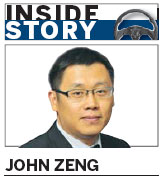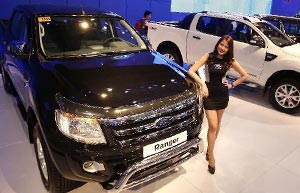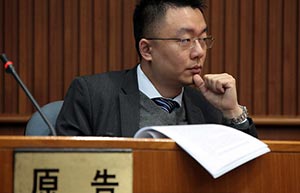Subsidies for green cars not bringing expected results
By John Zeng (China Daily) Updated: 2013-04-01 05:47More coordination needed between local, national policies
Despite unprecedented efforts by the government to promote green vehicles, growth in this market has failed to meet expectations.
When a program to subsidize alternative-energy vehicles was launched in 2009 by the central government, authorities projected that the collective sales of these vehicles in select pilot cities would reach 53,000 by 2012.
However, sales fell far short of the mark. In the 25 pilot cities, 27,432 vehicles were sold, 4,400 of which were to private owners and the rest to public fleets.
Sponsored by four central government ministries, the pilot program started in 25 major Chinese cities, including Beijing, Shanghai, Chongqing, Hangzhou and Shenzhen.
It was only the first of many measures intended to stimulate the growth of a green car market.

In May 2010, the four ministries issued another subsidy policy for private vehicles using alternative energy. This subsidy was set according to the battery capacity of the vehicle at a rate of 3,000 yuan per kilowatt-hour.
Buyers of plug-in hybrid cars could receive up to 50,000 yuan in subsidies, and subsidies of up to 60,000 yuan would be given to buyers of pure-electric cars.
Since the nationwide program was initiated, the governments of pilot cities have also come up with their own promotional plans to provide additional local subsidies.
During the two sessions this year, the four ministries reached a consensus to extend the subsidy policy for alternative-energy vehicles for another three years.
Although leaders say they remain resolute in their support of green cars, it is still uncertain if the three-year extension of the subsidy policy will have the intended effect on the market.
Local protectionism
There are barriers that prevent the subsidy policy from working effectively, including local protectionism.
In addition to the State subsidy policy, first-tier pilot cities have formulated local subsidy policies, but many of these have been criticized as discriminatory to products made outside of the city.
For example, some may offer tax rebates for producers of these vehicles, but non-local enterprises may be ineligible because they pay no taxes in the area except for sales tax paid by dealers and buyers.
Consequently, regional policies in each area allow support to flow only to locally built models and practically exclude models by non-local manufacturers.
As a leader in China's alternative-energy vehicle market, Shenzhen-based BYD can be taken as an example.
Since trial operations for the model began in 2010, more than 800 BYD E6 electric cars have been added to the local taxi fleets in Shenzhen, according to the latest available statistics.
The E6 has officially entered the commercial stage, and with accumulated mileage surpassing 12.5 million kilometers, it is one of the world's largest and most successful pilot programs in this field.
However, the model has not been promoted successfully outside Shenzhen because of local restrictions in subsidy policies.
Guangzhou is in the same province as Shenzhen, but in the city, the Nissan Leaf has been selected as the main demonstration model of electric vehicles.
Because the city's subsidies were recently expanded to include hybrids, local automaker Guangqi Toyota was naturally one of the main beneficiaries.
When the local subsidy program was launched last year in Shanghai, the qualified models were the Roewe E50, the Sail Springo, and the Lifan, all of which are locally produced.
The BYD E6 was reportedly unable to enjoy the subsidy policy because it was temporarily not in line with standards in Shanghai.
In Beijing and Hangzhou, the stories are similar.
Only locally manufactured models like the Foton in Beijing and Zotye in Zhejiang can benefit from the subsidy policy.
Therefore, local protection is a major obstacle restricting the popularization of green vehicles. It is also one of the main reasons for the slow development of the alternative-energy vehicle market in various cities.
If the central government's subsidies continue to be used alongside local subsidies with a protectionist tendency, a major side effect will be fragmentation of the market, while the commercial prospects of alternative-energy vehicles will remain uncertain.
The author is a director of LMC Automotive Asia Pacific Forecasting.
jzeng@lmc-auto.com.
- Lufthansa Cargo strengthens its presence in China
- China battles for rags-to-riches stories
- Cars, models at 10th Manila Intl Auto Show
- Jack Ma to acquire 20% of Wasu Media
- XP's demise helps Chinese IT developers
- GM planning lower-priced version of 2016 Chevy Volt
- TV debate in Boao Forum for Asia Annual Conference
- White swans seen on Ulunggur Lake, Xinjiang

















